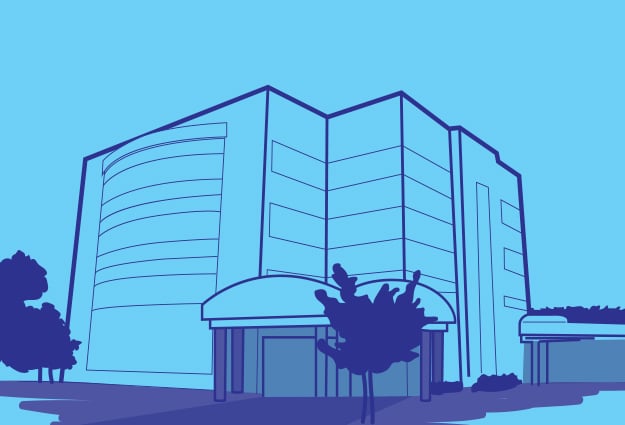
"If only I knew then what I know now." A common refrain as more and more imaging centers are moving towards offering digital breast tomosynthesis or 3D mammography.
Despite the amount of literature available from equipment manufacturers and industry publications on the subject, it seems each install teaches us something new.
To help you in your journey, we had the opportunity to chat with Lesley Dykman, Breast Imaging Manager of Inland Imaging (Spokane, Washington), regarding her experience and what advice she would offer to others considering implementing 3D mammography at their own centers.
Lesley, for a little bit of background, is a passionate patient advocate and early champion of 3D imaging for mammography, even before it was approved by the FDA. She was involved in developing the first breast center to install a 3D unit on the west coast, and more recently, oversaw the installation of nine 3D units in all five of the Inland Imaging centers that offer mammography, the highest volume of which performs 100 screening mammograms per day.
With 13 installs in 7 locations under her belt, she has some surprising lessons to share about going tomo:
1) You may be ready for tomo, but your building might not: According to Lesley, older buildings may not be wired adequately for the extra demands of the 3D units and their accompanying co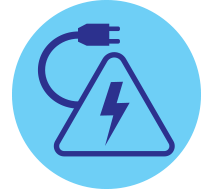 mputer systems.
mputer systems.
She stated that tomo units average 45 amps, about 10 more than the units they replaced, so you need to plan for increased load on existing wiring and data systems. She also pointed out that floors need to be scanned for any wiring underneath and to determine whether they can support the weight of the equipment and safely have 8 holes drilled in them. Room size is another concern. One of Lesley's installs for Inland Imaging ended up being a total remodel as the room where the old mammography unit was housed just wasn't large enough.
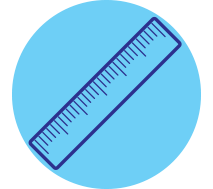 2) Positioning in 3D is different: Because the base of the tomo unit is wider and thicker than the equipment it replaced, Lesley's technologists were faced with the challenge of the patient being too far back from the plate, which is also thicker than they were used to. As Lesley put it - "It's not harder (to position), it's just the way the machine is designed. It's kind of like closing one eye and driving. Something's off and you just can't put your finger on it."
2) Positioning in 3D is different: Because the base of the tomo unit is wider and thicker than the equipment it replaced, Lesley's technologists were faced with the challenge of the patient being too far back from the plate, which is also thicker than they were used to. As Lesley put it - "It's not harder (to position), it's just the way the machine is designed. It's kind of like closing one eye and driving. Something's off and you just can't put your finger on it."
To overcome this challenge, Lesley hired a positioning expert to come on site and put her technologist staff through what was called "Positioning Boot Camp." Lesley said bootcamp was great as "everybody learned how to position for 3D the exact same way, how to step the patient forward more because of the thickness of the plate, how to relax the arm and shoulder to adjust for the height of the plate, and so forth. It really helped getting the muscle in nicely on MLO's, which was something they initially struggled with on the new equipment."
3) Be proactive and act fast to minimize downtime: Lesley advises to have your packet, the signatures, and money all set and in place for the ACR (American College of Radiology) and FDA. "The moment the physicists are done inspecting the machine and you get those reports, stuff everything into a mailer and send off ASAP. If those films and reports go out immediately, it helps in getting your equipment up and running sooner rather than later." 
Lesley cautions that applications specialists do not fly on Sunday, so always plan on down time until you get the OK to use. She added that ideally one would have an advantage of getting the machine installed by Wednesday and having it inspected by the physicist on Thursday. The paperwork can go out by Friday to the ACR and FDA. Hopefully you would hear from the ACR by Monday morning so that you can start applications the next day. The FDA can take a number of days before you can actually use the Tomosynthesis modality, but after applications you can start patients on the 2D part of the equipment.
4) Don't underestimate the impact on current practices, protocols, and other departments: Everything from scheduling to skin marking to communication on views ordered or performed to how patients were handed off to ultrasound was subject to evaluation and change during their transition to tomosynthesis.
"One of the biggest obstacles is making people aware that it (implementing 3D mammography) will affect other modalities and how radiologists interpret images," Lesley explained.
One of the selling points of DBT is that because radiologists are able to see more breast tissue detail, patient callbacks for false positives will decrease. This is true, according to Lesley, who reported that her call back rate in mammogra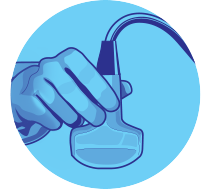 phy reduced by 15% after implementing 3D mammography.
phy reduced by 15% after implementing 3D mammography.
The flip side, however, is that because radiologists are seeing more detail, they are also encountering more findings that prompt further workups. "Our radiologists were having these 'aha' moments where they would discover tiny lesions in fatty tissue, not to mention what they were now seeing with dense tissue that was never picked up on in mammography before 3D. It's an incredible technology," Lesley told us.
Her facilities saw a 50% increase in breast ultrasounds after implementation, prompting Inland Imaging to rebuild its highest volume center to fit an additional ultrasound room.
5) Your receptionists and schedulers can be your best marketing champions: One thing Lesley didn't do at her first install, but did at Inland Imaging, was educate receptionists and schedulers on 3D.
Lesley had a speaker come in with a presentation on tomosynthesis, showing slides and discussing the benefits of this exam. According to Lesley, "...to show them what's normal, and what this looks like with cancer, all of a sudden we had these people who were more than excited and more than involved! Afterwards they would tell patient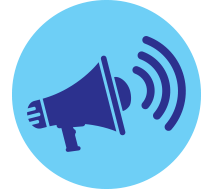 s on the phone 'if you're willing to wait, we'll have 3D in another few weeks.' That kind of decreased our volume a little bit in the interim, but as soon we were 'Go Live,' we couldn't keep up with the volume thanks to their efforts and word of mouth."
s on the phone 'if you're willing to wait, we'll have 3D in another few weeks.' That kind of decreased our volume a little bit in the interim, but as soon we were 'Go Live,' we couldn't keep up with the volume thanks to their efforts and word of mouth."
And that volume has continued to increase for Lesley - even to the point where she actually had to pull outside advertising and is considering adding another unit to handle the demand.
6) Skin markers not obsolete in Tomo - in fact, far from it: One of the misconceptions about digital breast tomosynthesis is that you don't need to use mammography skin markers due to how much more tissue detail you can see under the 3D imaging. In reality, it is the very sensitivity of the new technology that has many revising their protocols to use certain skin markers more consistently and one of the reasons why Beekley Medical was the first company to introduce a line of skin markers specifically designed for 3D breast tomosynthesis.
Lesley first found value in keeping the use of nipple markers in during her positioning boot camp. She said that there is a learning curve not only with positioning, but also with the extended time of exposure, and that they had a lot of motion issues because of that at first. The pellet on the nipple markers were very helpful with detecting motion - as Lesley put it, "If you see any blur with that pellet on the nipple marker, you know you've got motion."
Like many others, Le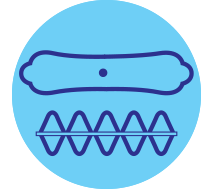 sley also noted increased instances of architectural distortion in their 3D images. "With tomosynthesis, you do see a lot more scarring in the breast, and a lot of doctors can just pass that off as being a (previous) biopsy site. Michael, (Lesley's Account Manager at Beekley Medical) shared a blog post with me on how a radiologist almost missed a cancer due to the fact that the architectural distortion she was seeing was not correlated to a prior surgery as she had first assumed - something she could not see until she used a scar marker to indicate the prior excision site. I brought that up to the radiologists at one of their meetings and lo and behold, 3 days later we had a patient where their scar did not match the lesion in the breast tissue. That was huge for us." As a result, their marking protocol changed so that everyone who has ever had any type of biopsy gets a scar marker on the incisional site.
sley also noted increased instances of architectural distortion in their 3D images. "With tomosynthesis, you do see a lot more scarring in the breast, and a lot of doctors can just pass that off as being a (previous) biopsy site. Michael, (Lesley's Account Manager at Beekley Medical) shared a blog post with me on how a radiologist almost missed a cancer due to the fact that the architectural distortion she was seeing was not correlated to a prior surgery as she had first assumed - something she could not see until she used a scar marker to indicate the prior excision site. I brought that up to the radiologists at one of their meetings and lo and behold, 3 days later we had a patient where their scar did not match the lesion in the breast tissue. That was huge for us." As a result, their marking protocol changed so that everyone who has ever had any type of biopsy gets a scar marker on the incisional site.
Since then, Lesley told us, they have had 2 cases where they had a lesion in the breast that could have been mistaken for scar tissue related to a previous surgery if not for the use of the scar marker which proved the distortion seen on the image was indeed a new finding, "Those are 2 positive cancers that probably would not have been discovered until, over time, they had increased in size."
Lesley's biggest takeaway?
Despite the surprises and challenges along the way, implementing 3D mammography was a sound investment that paid for itself pretty quickly. As she sees it, offering digital breast tomosynthesis helped her facilities transition from places that offered mammography into breast imaging centers with a lot more interdepartmental communication and synergy.
We hope that the six surprising lessons Lesley shared from her 3D mammography implementation experience are helpful to those of you who have yet to transition to tomo. For those of you who already have, what would you add to the list?
Related articles:

Mary Lang Pelton
Director of Marketing Communications
